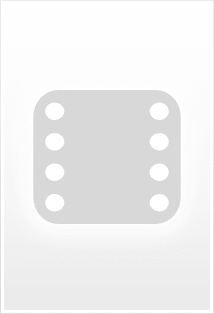My review is for the original full-length docudrama made by Gregg Toland. For a variety of reasons, the US government (who commissioned the film) hated Toland's version and John Ford was brought in to rescue the project. He re-shot some scenes, created a few new ones and edited away about much of the film. Interestingly, this much shorter version received an Oscar and the original version was censored for many years.
The film begins with the embodiment of Uncle Sam (Walter Huston) meeting up with an old guy (the familiar character actor, Harry Davenport). What follows is a history lesson concerning Hawaii (particularly focusing on Hawaiians of Japanese descent) and account of the surprise Japanese attack on Pearl Harbor which is narrated by Sam. Interestingly, Uncle Sam talks on and on about how these Japanese-Americans are very loyal to America and Davenport (usually such a nice guy in films) goes on to question their loyalty and their 'so called religion called Shinto'! Interestingly, Davenport's attitude about these people is pretty much in line with the government policy of internment of Japanese-Americans following the December 7th attack. And, very oddly, Uncle Sam is seen as naive and perhaps a little stupid. What follows is a lot of dry narration and, finally, an odd scene between dead soldiers (one of which id Dana Andrews).
So why did the government dislike the film? First, although being anti-Japanese was encouraged, the original version basically said that beneath their veneer, many Japanese-Americans were evil agents working for Japan--and that Uncle Sam (i.e., the US government) had been naive and complacent. Second, when it came to the surprise attack, the original film said that we SHOULD have been ready and led credence to conspiracy theories that the government knew or should have known about the attack. As a result, of both themes, the film came off like an indictment of the government and instead of instilling patriotism, it might have instead served to create a defeatist and anti-government attitude. I can see why the film was re-made and edited.
Sure it was filled with very nasty anti-Japanese material...but was it well made? What about the technical merits of the film? I don't really think it was made well. Much of the film needed tightening. For example, the Japanese montage just went on too long. Additionally, as I mentioned above, the film was not at all successful in conveying what the government wanted--a HUGE drawback. Its nasty tone really represents negative propaganda and I fully understand the need to re-do this picture. Still, very interesting and an unusual insight into the sorts of feelings brewing in America at the time. Probably mostly of value to historians today and I am glad it is finally available-- politically correct or not!
By the way, it IS true that many of the ships sunk at Pearl Harbor were actually repaired and recommissioned. I am not sure whether or not the US government wanted this to be known or not. I could see an advantage for not letting the enemy know this or the benefit of letting the civilians know we are resilient.
The film begins with the embodiment of Uncle Sam (Walter Huston) meeting up with an old guy (the familiar character actor, Harry Davenport). What follows is a history lesson concerning Hawaii (particularly focusing on Hawaiians of Japanese descent) and account of the surprise Japanese attack on Pearl Harbor which is narrated by Sam. Interestingly, Uncle Sam talks on and on about how these Japanese-Americans are very loyal to America and Davenport (usually such a nice guy in films) goes on to question their loyalty and their 'so called religion called Shinto'! Interestingly, Davenport's attitude about these people is pretty much in line with the government policy of internment of Japanese-Americans following the December 7th attack. And, very oddly, Uncle Sam is seen as naive and perhaps a little stupid. What follows is a lot of dry narration and, finally, an odd scene between dead soldiers (one of which id Dana Andrews).
So why did the government dislike the film? First, although being anti-Japanese was encouraged, the original version basically said that beneath their veneer, many Japanese-Americans were evil agents working for Japan--and that Uncle Sam (i.e., the US government) had been naive and complacent. Second, when it came to the surprise attack, the original film said that we SHOULD have been ready and led credence to conspiracy theories that the government knew or should have known about the attack. As a result, of both themes, the film came off like an indictment of the government and instead of instilling patriotism, it might have instead served to create a defeatist and anti-government attitude. I can see why the film was re-made and edited.
Sure it was filled with very nasty anti-Japanese material...but was it well made? What about the technical merits of the film? I don't really think it was made well. Much of the film needed tightening. For example, the Japanese montage just went on too long. Additionally, as I mentioned above, the film was not at all successful in conveying what the government wanted--a HUGE drawback. Its nasty tone really represents negative propaganda and I fully understand the need to re-do this picture. Still, very interesting and an unusual insight into the sorts of feelings brewing in America at the time. Probably mostly of value to historians today and I am glad it is finally available-- politically correct or not!
By the way, it IS true that many of the ships sunk at Pearl Harbor were actually repaired and recommissioned. I am not sure whether or not the US government wanted this to be known or not. I could see an advantage for not letting the enemy know this or the benefit of letting the civilians know we are resilient.
